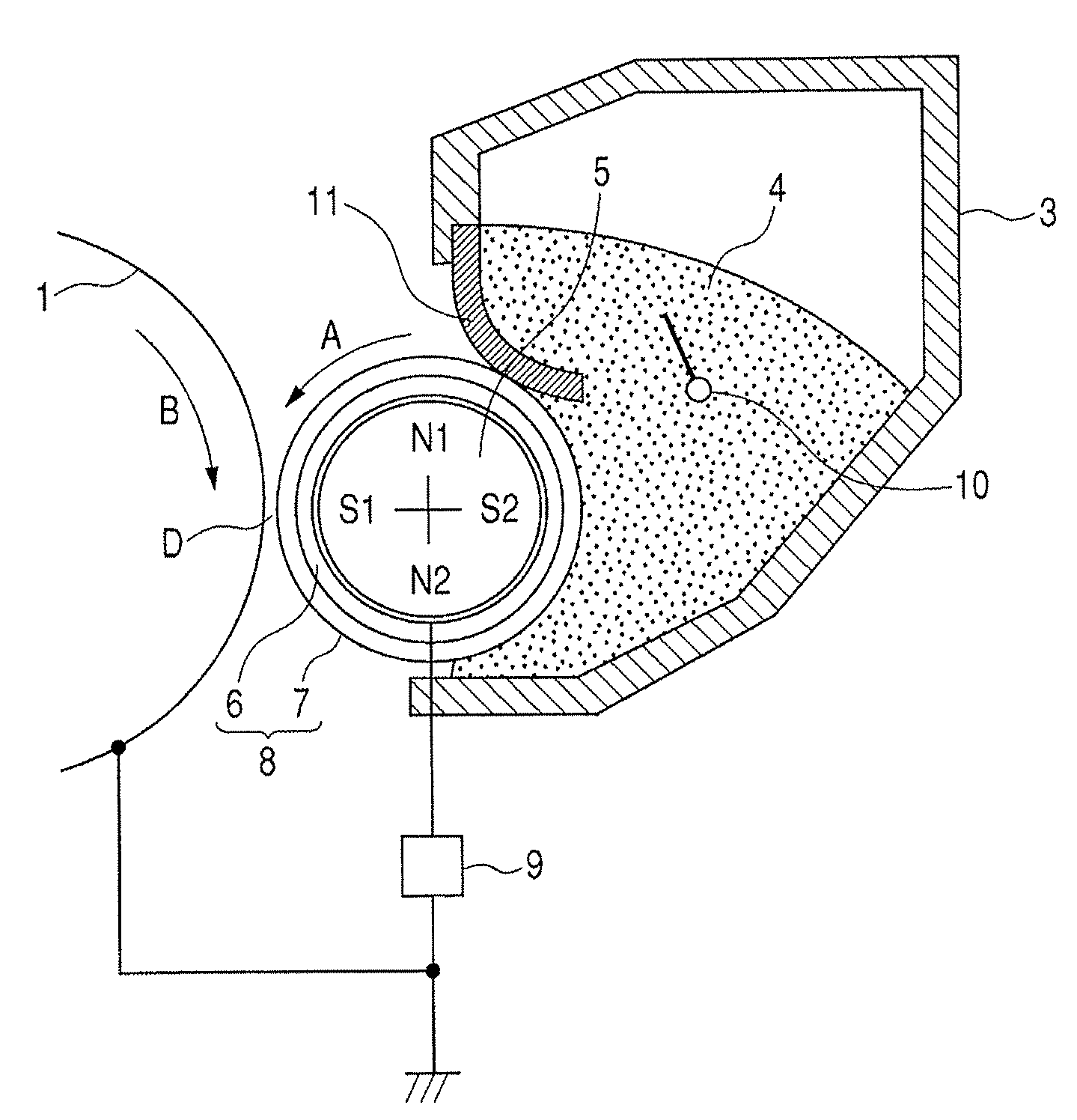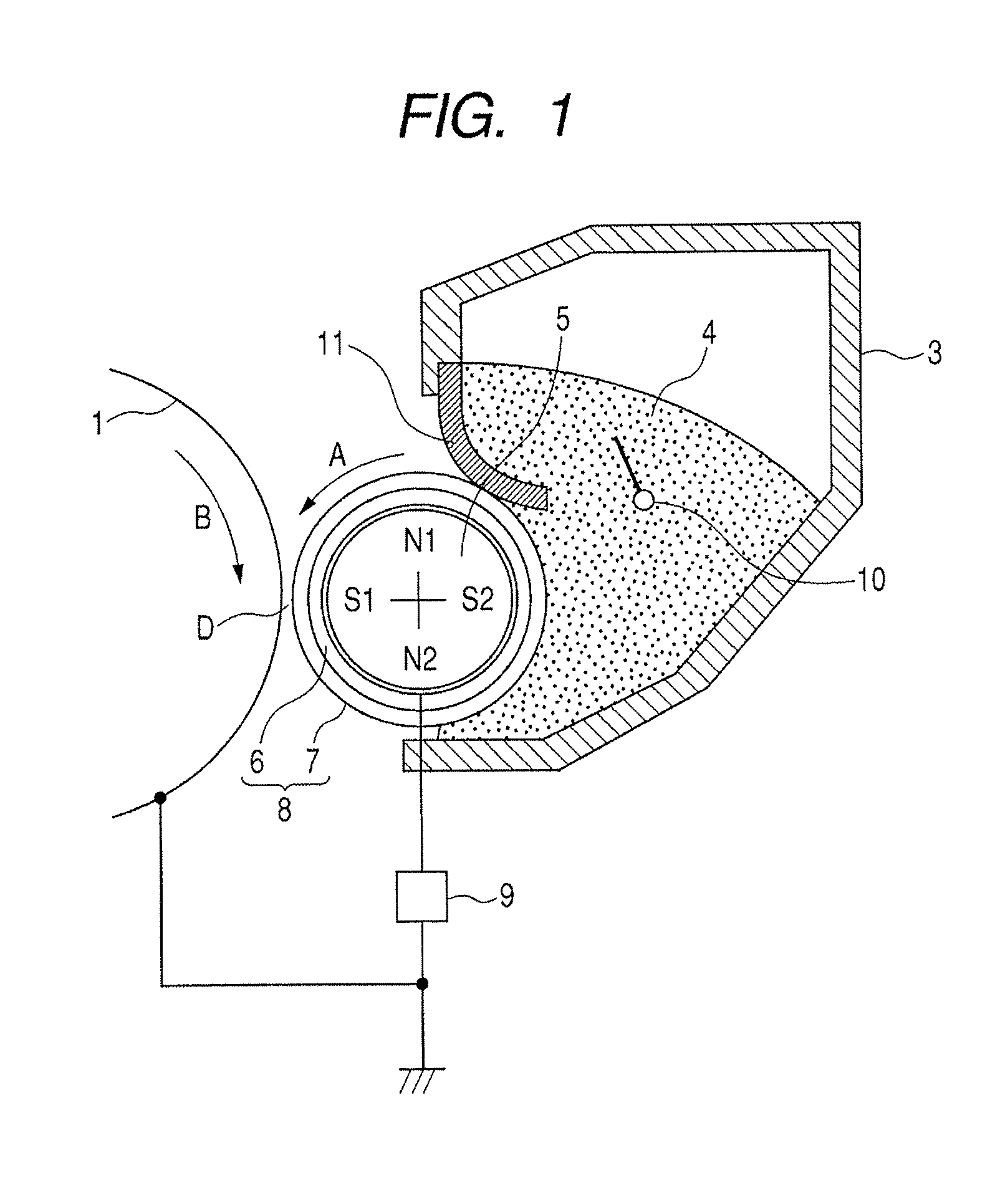Developing method and developing assembly
a technology of developing assembly and developing method, which is applied in the direction of developers, electrographic process devices, instruments, etc., can solve the problems of difficult to move from the developer, too large charge quantity of toner applied on the developer carrying member, and difficulty in charging toner
- Summary
- Abstract
- Description
- Claims
- Application Information
AI Technical Summary
Benefits of technology
Problems solved by technology
Method used
Image
Examples
example 1
[0421]Using the developer carrying member produced as described above, evaluation was made in the following way.
[0422]Developer Carrying Member S1 was set in a laser beam printer LASER JET 2300, manufactured by Hewlett-Packard Co., having the developing assembly shown in FIG. 1. As the toner, the above Magnetic toner 1 was used. As the developer layer thickness control member used in the developing assembly, a blade made of urethane as used in LASER JET 2300 was used, and its touch conditions were so changed as to be 40 g / cm (39.2 N / m) in linear pressure per 1 cm in the lengthwise direction of the developer carrying member.
[0423]As the development bias, the alternating electric field was set to be 1.6 kvpp and a frequency of 2,400 Hz, and the DC voltage (Vdc) was so set that development faithful to latent images were able to be faithfully developed (i.e., that line latent images of 200 μm and 4 dots were developed in a line width of 200 μm). In Example 1, the DC voltage was set to b...
examples 2 to 11
[0427]Using S2 to S10 and S14 as the developer carrying members and using T1 as the toner, evaluations were made in the same way as in Example 1. As a result, in all the cases, images on the level of no problem in practical use were obtained before and after the durability tests. These evaluation results are shown in Table 4.
examples 12 to 18
[0428]Using S1 as the developer carrying member and using T2 to T5 and T8 to T10 as the toners, evaluations were made in the same way as in Example 1. As a result, in all the cases, images on the level of no problem in practical use were obtained before and after the durability tests. These evaluation results are shown in Table 4.
PUM
 Login to View More
Login to View More Abstract
Description
Claims
Application Information
 Login to View More
Login to View More - R&D
- Intellectual Property
- Life Sciences
- Materials
- Tech Scout
- Unparalleled Data Quality
- Higher Quality Content
- 60% Fewer Hallucinations
Browse by: Latest US Patents, China's latest patents, Technical Efficacy Thesaurus, Application Domain, Technology Topic, Popular Technical Reports.
© 2025 PatSnap. All rights reserved.Legal|Privacy policy|Modern Slavery Act Transparency Statement|Sitemap|About US| Contact US: help@patsnap.com



